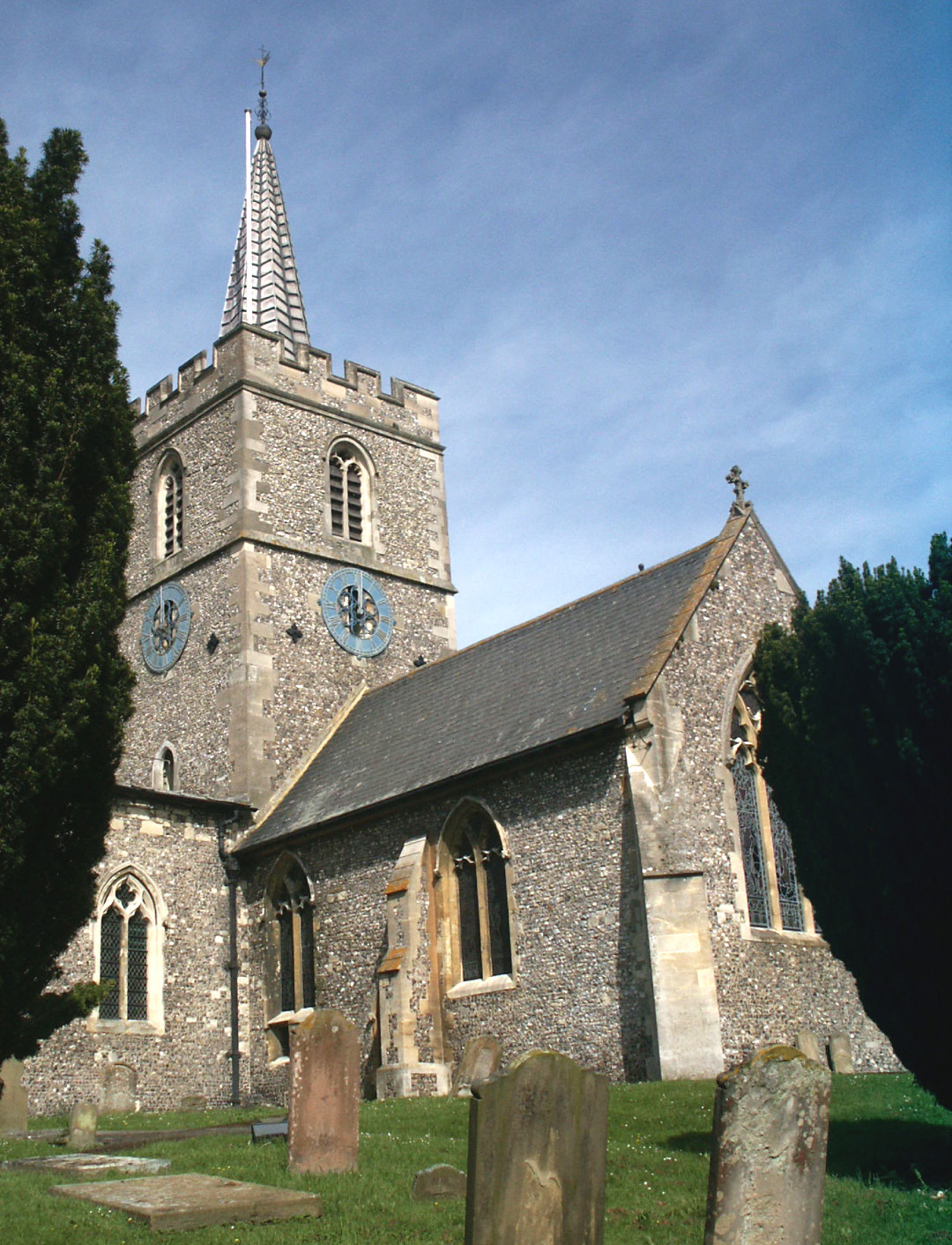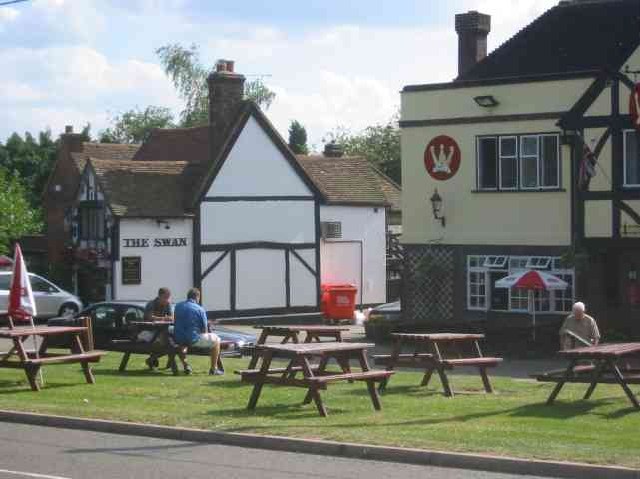|
Botley, Buckinghamshire
Botley is a hamlet in the civil parish of Chesham, in Buckinghamshire, England. The hamlet name is Anglo Saxon in origin, and means ''Botta's Clearing''. Botley includes the Hen and Chickens public house A pub (short for public house) is a kind of drinking establishment which is licensed to serve alcoholic drinks for consumption on the premises. The term ''public house'' first appeared in the United Kingdom in late 17th century, and wa ... and Goose Acre pond. Most of the houses in Botley are on Botley Road. Botley is divided between the civil parishes of Chesham and Latimer, and merges into the village of Ley Hill. References Chesham Hamlets in Buckinghamshire {{Buckinghamshire-geo-stub ... [...More Info...] [...Related Items...] OR: [Wikipedia] [Google] [Baidu] |
Buckinghamshire Council
Buckinghamshire Council is a Unitary authorities of England, unitary Local Government in England, local authority in England, the area of which constitutes most of the ceremonial county of Buckinghamshire. It was created in April 2020 from the areas that were previously administered by Buckinghamshire County Council including the districts of South Bucks, Chiltern District, Chiltern, Wycombe District, Wycombe and Aylesbury Vale; since 1997 the City of Milton Keynes has been a separate unitary authority. History The plan for a single unitary authority was proposed by Martin Tett, leader of the county council, and was backed by Secretary of State for Housing, Communities and Local Government, Communities Secretary James Brokenshire. District councils had also proposed a different plan in which Aylesbury Vale becomes a unitary authority and the other three districts becomes another unitary authority. The district councils opposed the (single) unitary Buckinghamshire plan. Statutory ... [...More Info...] [...Related Items...] OR: [Wikipedia] [Google] [Baidu] |
Buckinghamshire
Buckinghamshire (), abbreviated Bucks, is a ceremonial county in South East England that borders Greater London to the south-east, Berkshire to the south, Oxfordshire to the west, Northamptonshire to the north, Bedfordshire to the north-east and Hertfordshire to the east. Buckinghamshire is one of the Home Counties, the counties of England that surround Greater London. Towns such as High Wycombe, Amersham, Chesham and the Chalfonts in the east and southeast of the county are parts of the London commuter belt, forming some of the most densely populated parts of the county, with some even being served by the London Underground. Development in this region is restricted by the Metropolitan Green Belt. The county's largest settlement and only city is Milton Keynes in the northeast, which with the surrounding area is administered by Milton Keynes City Council as a unitary authority separately to the rest of Buckinghamshire. The remainder of the county is administered by Buck ... [...More Info...] [...Related Items...] OR: [Wikipedia] [Google] [Baidu] |
Chesham And Amersham (UK Parliament Constituency)
Chesham and Amersham () is a parliamentary constituency in Buckinghamshire, South East England, represented in the House of Commons by Sarah Green, a Liberal Democrat elected at a 2021 by-election. History Contents and regional context The seat was created for the general election in February 1974. It comprises the southern part of the former Rural District of Amersham, including Amersham and the Chalfonts, previously part of the abolished constituency of South Buckinghamshire; and Chesham and the northern part of the former Rural District, transferred from Aylesbury. Political history and demography The local authority is in Buckinghamshire Council and the seat coincides with the abolished Chiltern District. It includes the towns of Chesham and Amersham and outlying villages within the Metropolitan Green Belt. The area is connected with Central London by the Metropolitan Line of the London Underground, as well as the London to Aylesbury Line and the Chiltern Main Line, both ... [...More Info...] [...Related Items...] OR: [Wikipedia] [Google] [Baidu] |
Hamlet (place)
A hamlet is a human settlement that is smaller than a town or village. Its size relative to a Parish (administrative division), parish can depend on the administration and region. A hamlet may be considered to be a smaller settlement or subdivision or satellite entity to a larger settlement. The word and concept of a hamlet has roots in the Anglo-Norman settlement of England, where the old French ' came to apply to small human settlements. Etymology The word comes from Anglo-Norman language, Anglo-Norman ', corresponding to Old French ', the diminutive of Old French ' meaning a little village. This, in turn, is a diminutive of Old French ', possibly borrowed from (West Germanic languages, West Germanic) Franconian languages. Compare with modern French ', Dutch language, Dutch ', Frisian languages, Frisian ', German ', Old English ' and Modern English ''home''. By country Afghanistan In Afghanistan, the counterpart of the hamlet is the Qila, qala (Dari language, Dari: ... [...More Info...] [...Related Items...] OR: [Wikipedia] [Google] [Baidu] |
Civil Parishes In England
In England, a civil parish is a type of Parish (administrative division), administrative parish used for Local government in England, local government. It is a territorial designation which is the lowest tier of local government below districts of England, districts and metropolitan and non-metropolitan counties of England, counties, or their combined form, the Unitary authorities of England, unitary authority. Civil parishes can trace their origin to the ancient system of Parish (Church of England), ecclesiastical parishes, which historically played a role in both secular and religious administration. Civil and religious parishes were formally differentiated in the 19th century and are now entirely separate. Civil parishes in their modern form came into being through the Local Government Act 1894, which established elected Parish councils in England, parish councils to take on the secular functions of the vestry, parish vestry. A civil parish can range in size from a sparsely ... [...More Info...] [...Related Items...] OR: [Wikipedia] [Google] [Baidu] |
Chesham
Chesham (, , or ) is a market town and civil parish in Buckinghamshire Buckinghamshire (), abbreviated Bucks, is a ceremonial county in South East England that borders Greater London to the south-east, Berkshire to the south, Oxfordshire to the west, Northamptonshire to the north, Bedfordshire to the north-ea ..., England, south-east of the county town of Aylesbury, north-west of Charing Cross, central London, and part of the London metropolitan area, London commuter belt. It is in the River Chess, Chess Valley, surrounded by farmland. The earliest records of Chesham as a settlement are from the second half of the 10th century, although there is archaeological evidence of people in this area from around 8000 BC. Henry III of England, Henry III granted a royal charter for a weekly market in 1257. Chesham is known for its ''four Bs'' boots, beer, brushes and Baptists. In the face of fierce competition from both home and abroad during the later 19th and early 20th cent ... [...More Info...] [...Related Items...] OR: [Wikipedia] [Google] [Baidu] |
Old English Language
Old English (, ), or Anglo-Saxon, is the earliest recorded form of the English language, spoken in England and southern and eastern Scotland in the early Middle Ages. It was brought to Great Britain by Anglo-Saxon settlers in the mid-5th century, and the first Old English literary works date from the mid-7th century. After the Norman conquest of 1066, English was replaced, for a time, by Anglo-Norman (a relative of French) as the language of the upper classes. This is regarded as marking the end of the Old English era, since during this period the English language was heavily influenced by Anglo-Norman, developing into a phase known now as Middle English in England and Early Scots in Scotland. Old English developed from a set of Anglo-Frisian or Ingvaeonic dialects originally spoken by Germanic tribes traditionally known as the Angles, Saxons and Jutes. As the Germanic settlers became dominant in England, their language replaced the languages of Roman Britain: Common Br ... [...More Info...] [...Related Items...] OR: [Wikipedia] [Google] [Baidu] |
Public House
A pub (short for public house) is a kind of drinking establishment which is licensed to serve alcoholic drinks for consumption on the premises. The term ''public house'' first appeared in the United Kingdom in late 17th century, and was used to differentiate private houses from those which were, quite literally, open to the public as "alehouses", "taverns" and "inns". By Georgian times, the term had become common parlance, although taverns, as a distinct establishment, had largely ceased to exist by the beginning of the 19th century. Today, there is no strict definition, but CAMRA states a pub has four characteristics:GLA Economics, Closing time: London's public houses, 2017 # is open to the public without membership or residency # serves draught beer or cider without requiring food be consumed # has at least one indoor area not laid out for meals # allows drinks to be bought at a bar (i.e., not only table service) The history of pubs can be traced to Roman taverns in B ... [...More Info...] [...Related Items...] OR: [Wikipedia] [Google] [Baidu] |
Latimer, Buckinghamshire
Latimer is a village that sits on the border between Buckinghamshire and Hertfordshire, England. In 2013, the civil parish of Latimer was renamed, Latimer and Ley Hill. The parish, forming part of the Buckinghamshire district of Chiltern, includes the villages of Latimer, Ley Hill and Tyler's Hill. History Latimer was originally joined with the adjacent village of Chenies. Both were anciently called Isenhampstead, at a time when there was a royal palace in the vicinity. However, in the reign of King Edward III of England the lands were split between two manorial barons: Thomas Cheyne in the village that later became known as 'Chenies', and William Latimer in this village. Latimer came into possession of the manor in 1326. At the time of the English Civil War Latimer belonged to the Earl of Devonshire. When Charles I was captured by the Parliamentarian forces he was brought to Latimer on his way to London. The triangular village green has two memorials. The first is a mem ... [...More Info...] [...Related Items...] OR: [Wikipedia] [Google] [Baidu] |
Ley Hill
Ley Hill is a Chiltern village on the Buckinghamshire/ Hertfordshire border in south-east England, near the town of Chesham. It is part of the civil parish of Latimer and Ley Hill, and comes under Chiltern District Council in the County of Buckinghamshire. Ley Hill lies in the Chiltern Hills and is contiguous with Botley. The Common The village has a large common, which is used by Chesham and Ley Hill Golf Club and Ley Hill Cricket Club. Golf has been played on the Common since about 1900. In 2000 a village sign was hung up on the Common which incorporates an owl as the unofficial village emblem. Pubs There are two pubs on the Common called The Swan and The Crown that both serve food. The Swan was built in about 1520, and takes its name from the symbol of the county of Buckinghamshire. In 1680, the timber-framed building consisted of three cottages with five extensions, oak-beamed ceilings and pillars, a kitchen range and an inglenook fireplace. It is reputedly one o ... [...More Info...] [...Related Items...] OR: [Wikipedia] [Google] [Baidu] |





